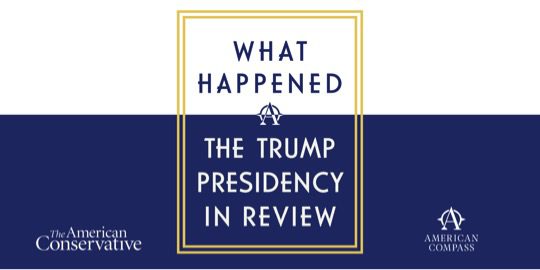What Happened? The Trump Presidency in Review

Justice Elena Kagan, shortly after departing her domestic-policy role in the Clinton White House, penned an epic article for the Harvard Law Review titled, simply, “Presidential Administration.” Across more than 100 pages and 500 footnotes, Kagan described how President Bill Clinton, building on President Ronald Reagan’s efforts to rein in regulators, made the executive branch “more and more an extension of the President’s own policy and political agenda.” This template has become the standard. References to presidents and their administrations are used interchangeably, and as synecdoches for governing philosophies and agendas.
As in many things, President Trump does not fit this mold. Indeed, while the chattering classes enjoy pondering the prospects of “Trumpism without Trump,” the better question might be: Is there a “Trumpism,” or only a Trump? Looking beyond the TV-celebrity personality and the 50,000+ tweets, was there a coherent vision or agenda? Was an administration staffed to advance it? And what, in the end, was actually done?
This symposium marks the first substantial attempt to construct and examine the Trump administration’s record of accomplishment, with an emphasis on economic policy in the three years prior to the onset of COVID-19. Its timing and length make it necessarily incomplete and perhaps downright premature, but as a “first rough draft of history” it can hopefully provide a starting point for debate and reflection. Indeed, even among the authors, there are numerous points of disagreement, if not about what happened then about what mattered and what it all means.
The essays approach their subject from different perspectives, but several key themes emerge:
- Trumpism cannot be declared a “success” or a “failure” because it did not exist. The administration, which neither emerged from nor erected institutional infrastructure or an intellectual framework, lacked both overarching vision and an integrated policy agenda. For most statements, appointments, and policy actions there exist equal and opposite ones.
- Personnel proved an insurmountable obstacle. The administration’s indeterminacy and internal conflict were in part the result of the principal’s own style and substance. But its unusual ideological variability and its reliance on big names over steady hands greatly compounded the challenge. Agendas formed, rose, and fell on the strength of small teams in specific departments, while the prospect for progress requiring interagency coordination or an all-of-government approach was virtually nil.
- The conservative future remains unwritten. The Trump administration leaves behind countless initiatives to debate and then build upon, or discard, with lessons in each case to be learned. But it is a case study, not a template. Future leaders could not replicate it if they tried, nor should they want to. Equally foolish, though, is using the administration’s shortcomings as evidence for a return to the pre-Trump status quo. As Trump’s presidency underscored, America faces many problems to which its right-of-center has long been unresponsive. Conservatives must now apply their principles to the development of a new path forward.
The other articles in this series, “What Happened: The Trump Presidency In Review,” published in partnership with American Compass, can be found here:
“Foreword: The Work Remains,” by Daniel McCarthy
“Too Few of the President’s Men,” by Rachel Bovard
“A Populism Deferred,” by Julius Krein
“The Potpourri Presidency,” by Wells King
“Some Like it Hot,” by Oren Cass
Comments